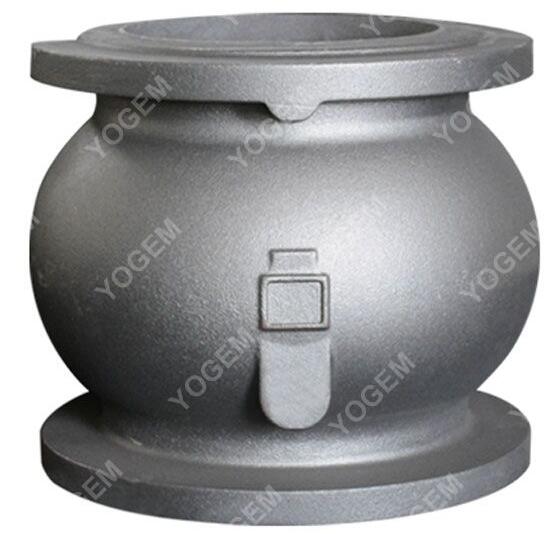Ductile Iron Casting, also known as nodular or spheroidal graphite iron casting, is a type of cast iron with enhanced mechanical properties, particularly superior ductility. This material is produced by adding small amounts of magnesium or cerium to the molten iron during the casting process, causing the graphite within the iron to form in a spheroidal or nodular shape. This unique microstructure is responsible for the exceptional strength, toughness, and flexibility of Ductile Iron Casting.
Now, let's explore the key differences between Ductile Iron Casting and other casting methods:

Microstructure and Properties:
Ductile Iron Casting stands out due to its distinctive microstructure with spherical graphite nodules. This unique arrangement offers greater ductility and toughness compared to traditional grey iron casting, which has a flake-like graphite structure. As a result, Ductile Iron Casting exhibits higher tensile strength and impact resistance, making it suitable for demanding applications.
Strength and Ductility:
The primary advantage of Ductile Iron sand Casting over other casting methods is its exceptional combination of strength and ductility. While traditional grey iron is strong but relatively brittle, Ductile Iron Casting strikes a balance between strength and flexibility. This enables it to withstand heavy loads, shocks, and vibrations without fracturing, making it ideal for critical engineering applications.
Versatility:
Ductile Iron Casting's versatility sets it apart from other casting methods. Its mechanical properties can be tailored to meet specific application requirements through proper alloying and heat treatment processes. This adaptability allows engineers to use Ductile Iron Casting in a wide range of industries, from automotive and machinery to construction and agriculture.
Machinability:
Ductile Iron Casting offers excellent machinability, making it easier to work with during the manufacturing process compared to some other materials. The nodular graphite structure allows for smoother and more predictable machining, resulting in reduced tool wear and enhanced production efficiency.
Cost-Effectiveness:
Another advantage of Ductile Iron Casting is its cost-effectiveness. Compared to certain non-ferrous metals or high-performance alloys, Ductile Iron Casting is more budget-friendly while still offering impressive mechanical properties. This makes it an attractive choice for various industries seeking durable yet economically viable solutions.
Application Areas:
Ductile Iron Casting finds extensive use in industries where robustness, reliability, and ductility are crucial. It is commonly employed in manufacturing components for automotive, heavy machinery, pipes and fittings, hydraulic systems, and even marine applications. The ability of Ductile Iron Casting to withstand extreme conditions and corrosive environments makes it a preferred material for critical infrastructure projects.
In summary, Ductile Iron Casting sets itself apart from other casting methods with its unique microstructure, providing superior strength, ductility, and versatility. This remarkable material continues to play a vital role in advancing various industries, where its exceptional properties contribute to the development of reliable and efficient components and structures.





Comments
0